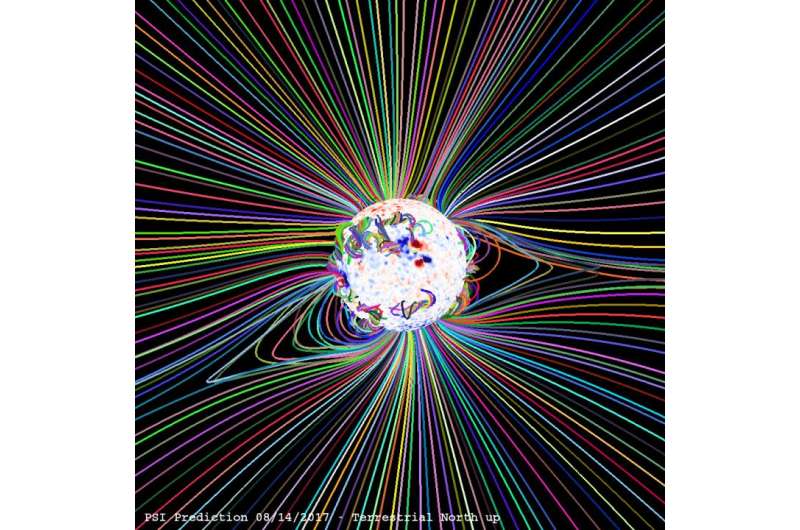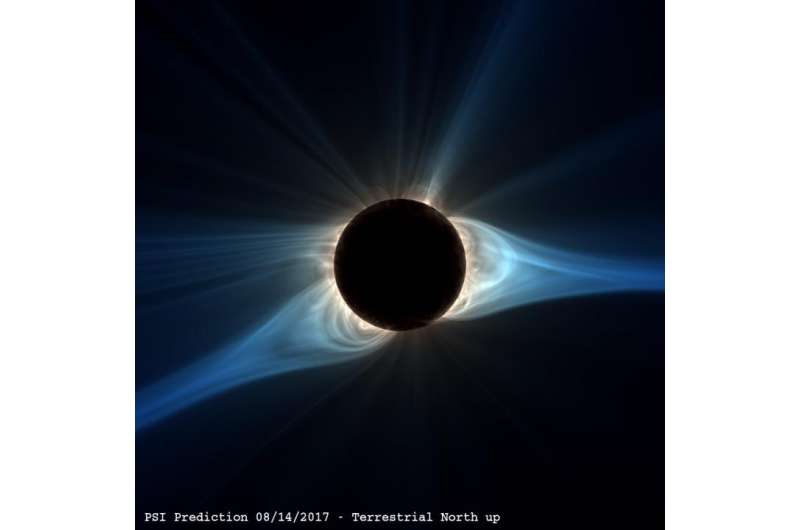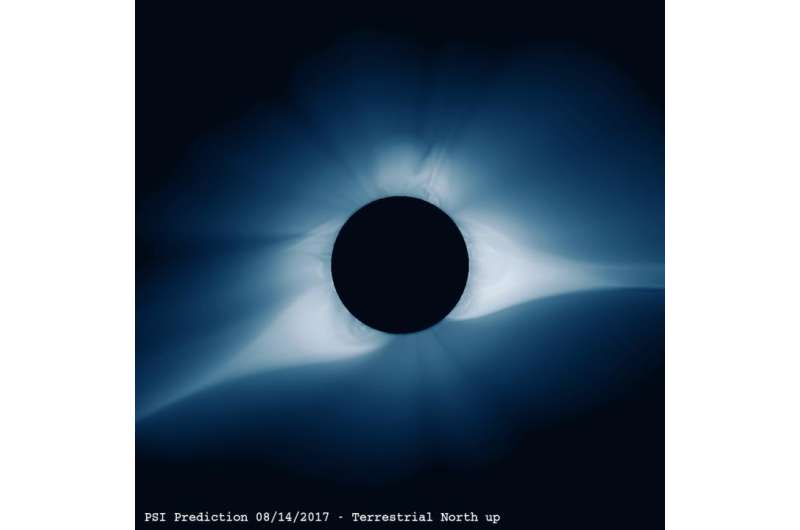Spoiler alert: Computer simulations provide preview of upcoming eclipse

A research team from Predictive Science Inc. (PSI) used the Stampede2 supercomputer at The University of Texas at Austin's Texas Advanced Computing Center (TACC) to forecast the corona of the sun during the upcoming eclipse. The findings shed light on what the eclipse of the sun might look like Aug. 21 when it will be visible across much of the U.S., tracing a 70-mile-wide band across 14 states.
Beyond their rarity, solar eclipses help astronomers better understand the sun's structure, inner workings and the space weather it generates.
The researchers completed a series of highly detailed solar simulations timed to the moment of the eclipse using TACC's Stampede2, Comet at the San Diego Supercomputer Center, and NASA's Pleiades supercomputer. They modeled the sun's surface and predicted what the solar corona—the aura of plasma that surrounds the sun and extends millions of kilometers into space—will look like during this eclipse.
"Advanced computational resources are crucial to developing detailed physical models of the solar corona and solar wind," said Jon Linker, president and senior research scientist of PSI. "The growth in the power of these resources in recent years has fueled an increase in not only the resolution of these models, but the sophistication of the way the models treat the underlying physical processes as well."
The researchers' computer simulations were converted into scientific visualizations that approximate what the human eye might see during the solar eclipse.

The simulations are among the largest the research group has performed, using 65 million grid points to provide great accuracy and realism.
The team used data collected by the Helioseismic and Magnetic Imager aboard NASA's Solar Dynamics Observatory and a combination of magnetic field maps, solar rotation rates and mathematical models of how magnetohydrodynamics (the interplay of electrically conducting fluids such as plasmas and magnetic fields) affect the corona.
Predictions about the appearance of the corona during an eclipse test complex, three-dimensional computational models of the sun against visible reality.

Doing so improves the accuracy of predicting space weather, which could have important practical ramifications. If a powerful solar storm such as the 1859 Carrington Event—which led to auroras being visible as far south as the Caribbean and caused telegraphs to short and catch fire—were to hit Earth today, it would cause more than $2 trillion in damages, according a National Academy of Sciences report.
Predicting the arrival of such a solar storm in advance would allow officials to take the most critical electronic infrastructure offline and limit the storm's impact. But doing so requires understanding how the visible surface of the sun (the corona) relates to the mass ejections of plasma that cause space weather.
"With the ability to more accurately model solar plasmas, researchers will be able to better predict and reduce the impacts of space weather on key pieces of infrastructure that drive today's digital world," said Niall Gaffney, a former Hubble Space Telescope scientist and director of data intensive computing at TACC.
More information: www.nap.edu/catalog/12507/seve … d-economic-impacts-a
Provided by University of Texas at Austin





















